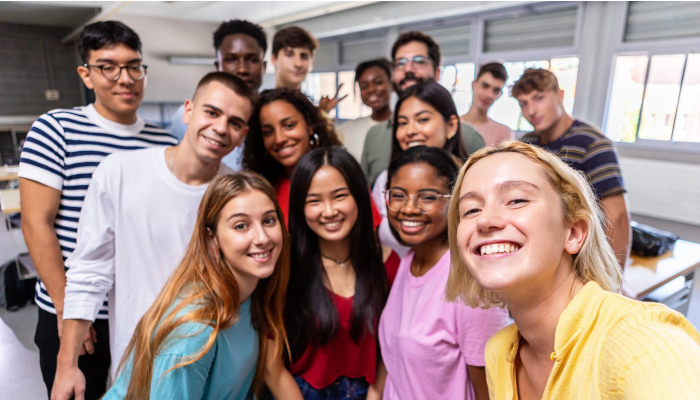College Readiness: The Ultimate Check List
By Guest Blogger Kelly Gunzenhauser
My son is a senior this year, and we are in the middle of the college application process. I think I have somewhat of a handle on college readiness, but it was pretty overwhelming to start. We followed others’ advice and got the process rolling with some college visits. This has turned out to be fun, and quite helpful in homing in on some of the things that are important to my kid. I decided to share some of what I learned along the way.
1 – Regarding visits: Begin early. Senior year can be crowded with applications and activities. We went on our first visit the summer before junior year.
2 – Start with virtual tours! You get a feel for a campus and can come up with questions to ask should you decide to visit in person. You can take self-guided virtual tours, sign up for tours through college fairs, or attend webinars for specific schools. Some schools team up to offer joint webinars; you can gain an introduction to as many as five schools at a time this way. (Thanks in part to COVID, virtual tours may emerge as the predominant way to visit some schools.)
3 – Especially if your kid is unsure about which field of study or environment is a good fit, you may want to visit and compare schools that have a different “feel” to them. For our first tour, we took our son to a large, urban campus. Our next visit was to a small, more rural campus. He had a definite preference that shaped future visits.
4 – Sign up for “official” in-person tours pretty far in advance—at least a month ahead in most cases. They fill up quickly. If you miss out on scheduling a visit, check back close to the date. Students often cancel at the last minute and spots can open back up.
5 – If you can’t get to a particular school for a visit, don’t worry. Many schools have an “admitted students day” for accepted students, whether they have committed or not. My son will be applying to a few schools he has not visited in person.
6 – Before you go, find out what is important to your student and make a list of questions you would like to have answered. For example, my son wanted to know about internships, co-op (work study) programs, research, and study abroad. On every tour, someone has asked about safety, food quality, and having a car on campus.
7 – On a good official tour, you will get a presentation that covers what the school has to offer (programs, student life and activities, dining and housing, internships and co-ops, study abroad), financial information, and the application process, and then there is usually a Q&A session. The end of the presentation is a good time to ask questions.
8 – After the presentation, most schools will assign you to small groups with student ambassadors who will give you a campus walking tour. You’re likely to see exceptional buildings, a dorm, a library, a dining hall, the student activities building, the main outdoor area (often a quad), and a few other areas of interest (business school, engineering school, teaching hospital, athletic center, maker space, etc.). All nine of our in-person tours lasted at least an hour, even though the schools ranged in size from very small (900 students) to 1,400 acres and thousands of students.
9 – During the walking tour is a great time to ask your ambassador open-ended questions. “Why do you love it here?” “What is a large class/small class like?” “What would you change about your experience here?” “What is the food like?” College student ambassadors are often quite candid, and they aren’t always just trying to sell you on their school. It’s better for everyone if a school is a good fit for students who attend.
10 – You can go more in-depth than the standard tour if you want to. You can call ahead and request to meet with someone from financial aid or admissions, for your student to sit in on a class, or to eat at the dining hall. If you do meet with specific staff members, professors, etc., be sure your student emails them a quick thank-you note. Not only is it the polite thing to do, it’s also another point of contact with staff.
11 – Take notes and pictures. After a while, college tours run together. Going back over my notes has been helpful. If you have a school brochure, you can take notes right onto the brochure itself.
12 – After the tour, walk or drive around the campus and the surrounding area. The local vibe can make a huge difference in students’ experiences. Be mindful, though, that a lot of tours are conducted during summers and holidays. A campus that feels deserted in July or on Sunday morning will feel busier during school hours and campus-wide events.
13 – Don’t let an imperfect tour overshadow a good fit school. When we toured my alma mater—my favorite place on earth, actually— it was pouring rain. I made sure we came back on a beautiful day, but if that had not been possible, I would have asked my son to take a virtual tour because it would have shown a sunny campus! Another campus tour we took was marred (in my opinion) by it being fraternity bake-sale day. Our (rather unenthusiastic) tour guide was repeatedly interrupted by shouts of, “Buy our cookies!” We have since talked to current students and alumni of this school and they assure us it is wonderful, so it’s still in the running because it’s a great academic match.
14 – Conversely, you can eliminate some schools if your child feels strongly about doing so. My son crossed out three schools on his list because he just couldn’t see himself there.
15 – Take the pressure off and have some fun! We have hung out on a beach, visited an aquarium, met up with out-of-state family, attended a Major League Baseball game, and eaten at countless ice cream shops (because ice cream is mandatory in my family). Each time I could feel my son evaluating his options for having fun.
16 – Tell your student ahead of time that NO ONE SCHOOL is a perfect match. College rejections are very hard, and if your student has all their eggs in one basket, it can be devastating. Countless parents and college admissions staff have told me that their best advice for students is to, “Love the school that loves them back.” Many kids get rejected from their dream school only to realize that another school was actually a better fit.
17 – Finally, this doesn’t just apply to college visits, but it is SO important throughout the process: Try to keep your stress level as low as possible so that you can keep your child’s stress level as low as possible. There are many moving parts to college shopping (applications, recommendations, financial aid and FAFSA/CSS, scholarship applications, testing), as well as TONS of decisions, like: Community college or four-year program? In-state or out-of-state? Early decision or regular admission? Public or private? Liberal arts or technical/STEM program? Test scores or test optional? Even though your next year will be filled with decisions and deadlines, try to relax so that you are helping your child enjoy their last year of high school.
If you are nearing the time for this process, I wish you luck and success in your searches. I would love to hear your college search words of wisdom, so please share in the comments.
Want to see more blogs like this and get notifications on local events and happenings? Subscribe to our free weekly newsletters here.







